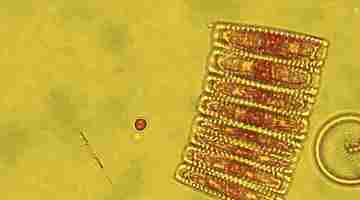Dr Sara Mikaloff-Fletcher, an atmospheric modeller at NIWA, describes the role of the Southern Ocean in taking up carbon dioxide from the atmosphere. Some computer models suggest that this carbon sink is slowing, which might accelerate climate change. The Argo project is providing data to test this model.
Transcript
DR SARA MIKALOFF-FLETCHER
The Southern Ocean is very important to the carbon cycle because the full ocean isn't able to be in contact with the atmosphere to take up CO2. For the most part just a thin layer of the ocean is able to be in contact with the atmosphere to take up CO2
The Southern Ocean is one of the few places in the world, where you actually have a large body of water, where deep deep waters are ventilated to the surface, so in the Southern Ocean, you have vigorous upwelling of this really old water that hasn't seen the surface in thousands of years, and when it gets to the surface its able to take up quite a lot of man made CO2, so the Southern Ocean takes up about a quarter of the man made CO2 that is being taken up by the global oceans.
The reason that the international science community has recently become very concerned about the Southern Ocean is that some modelling studies and some sources of data have suggested that the Southern Ocean carbon sink is actually slowing in response to climate change. So essentially some of the physical processes that are associated with climate change, seem to be slowing this Southern Ocean carbon uptake. If this were to happen on a large scale, it would essentially lead to a positive feedback to climate change, where climate change would be accelerated due to this shrinking of the carbon sinks, so that is the reason that people are very very concerned about the Southern Ocean.
The Argo float programme has been really valuable in truthing the models, and trying to understand whether or not the physical structures of the ocean that you're expecting from the models, are actually occurring in the present day.
Acknowledgements:
NASA/Goddard Space Flight Centre Scientific Visualization Studio/courtesy of nasaimages.org.
NIWA
Ms Pien Huang, Mr Daniel Park, and Ms Cassandra Lopez
Argo data in this video clip was collected and made freely available by the International Argo Project and the national programmes that contribute to it. (www.argo.ucsd.edu www.ocean-ops.org/board?t=argo). Argo is a pilot programme of the Global Ocean Observing System.




